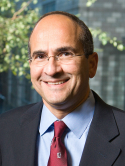A review of 716 consecutive free flaps for oncologic surgical defects: Refinement in donor-site selection and technique Journal Article
| Authors: | Hidalgo, D. A.; Disa, J. J.; Cordeiro, P. G.; Hu, Q. Y. |
| Article Title: | A review of 716 consecutive free flaps for oncologic surgical defects: Refinement in donor-site selection and technique |
| Abstract: | Free-tissue transfer has become an important method fbr reconstructing complex oncologic surgical defects. This study is a retrospective review of a 10-year experience with 716 consecutive free flaps in 698 patients. Regional applications included the head and neck (69 percent), trunk and breast (14 percent), lower extremity (12 percent), and upper extremity (5 percent). Donor sites included the rectus abdominis (195),fibula (193), forearm (133), latissimus dorsi (69),jejunum (55), gluteus (28), scapula (26), and seven others (17). Microvascular anastomoses were performed to large-caliber recipient vessels using a continuous suture technique; end-to-end anastomoses were preferred (75 percent). Flaps were designed to avoid the need for vein grafts. Conventional postoperative flap monitoring methods were used. These included clinical observation supplemented by Doppler ultrasonography, surface temperature probes, and pin prick testing. Buried flaps were either evaluated with Doppler ultrasonography or not monitored. The overall success rate for free-flap reconstruction of oncologic surgical defects was 98 percent. Fifty-seven flaps (8 percent) were reexplored for either anastomotic or infectious problems. Reexplored flaps were salvaged in 40 cases (70 percent). Surviving flaps resulted in a healed around and did not delay postoperative radiation or chemotherapy. The incidence of major and minor postoperative complications was 34 percent. The mean duration of hospitalization was 20 days, and the average cost was $40,224. The results of this study support the need for only seven donor sites to solve the majority (98 percent) of oncologic problems requiring microsurgical expertise. The evolution of preferred donor sites for specific regional applications is illustrated in this 10-year experience. Technical refinements have simplified performing the microsurgical anastomoses and essentially eliminated the need for vein grafts. Conventional monitoring has led to the rapid identification of vascular compromise and subsequent flap salvage in the majority of non-buried free flaps. |
| Keywords: | experience; neck; oral cavity; fibula free-flap; head; mandibular reconstruction; groin; island flap; microvascular anastomoses |
| Journal Title: | Plastic and Reconstructive Surgery |
| Volume: | 102 |
| Issue: | 3 |
| ISSN: | 0032-1052 |
| Publisher: | Lippincott Williams & Wilkins |
| Date Published: | 1998-01-01 |
| Start Page: | 722 |
| End Page: | 732 |
| Language: | English |
| ACCESSION: | WOS:000075605400016 |
| DOI: | 10.1097/00006534-199809030-00016 |
| PROVIDER: | wos |
| PUBMED: | 9727437 |
| Notes: | Article -- Source: Wos |
Altmetric
Citation Impact
BMJ Impact Analytics
Related MSK Work





